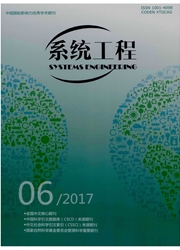

 中文摘要:
中文摘要:
采用均值一方差期望效用函数,推导了在给定风险条件下,期望收益最大的最优价差套利头寸比例,并且引入常方差(双变量向量自回归和双变量协整模型)来估计方差一协方差矩阵。采用2000年1月至2006年4月上海和LME铜期货合约日收盘价进行了实证检验,结果表明:不同时间窗长度下,双变量协整的计算结果比向量自回归的计算结果平均收益较高而风险较小,而这两者都比1:1的价差套利头寸比例和直接统计的计算结果要好。计算结果也表明:采用日收益计算出的价差套利头寸比例在不同时间窗条件下也具有相当的稳定性和可靠性。
 英文摘要:
英文摘要:
Based on the mean-variance expect utility function,the optimal futures spread position ratio to maximize the expect return under the presented risk, and the dual-VAR and dual-ECM models are introduced to estimate the co-variance matrix. The experimental results by the close prices of copper contracts between SHFE and LME from January 2000 to April 2006 shows that, in the different time windows, the spread position ration by dual-ECM models are better than the dual-VAR, while, both of them are better than 1:1 and statistical results, i.e. , the ratio makes higher returns and lower risk. The results also show that the ratios by daily return under different time span are stable and reliable.
 同期刊论文项目
同期刊论文项目
 同项目期刊论文
同项目期刊论文
 期刊信息
期刊信息
